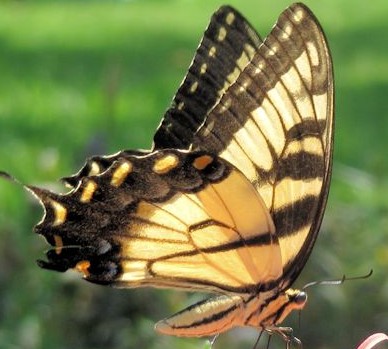 One of the most familiar butterflies in the eastern part of the US from the Rockies to the Atlantic coast, the eastern tiger swallowtail inhabits broadleaf woodlands, fields, roadsides, gardens, parks, orchards, and the edges of ponds, streams and rivers. Males are yellow with large black stripes in t wings. Females may have similar coloring but with considerable blue spots on the hind wings. Females may also be black or dark brown with blue on the hind wings. The wingspan is 3 to 5.5 inches with females being larger than males. Dark females are difficult to distinguish from Black Swallowtails, and both male and yellow forms may be confused with Giant Swallowtails.
One of the most familiar butterflies in the eastern part of the US from the Rockies to the Atlantic coast, the eastern tiger swallowtail inhabits broadleaf woodlands, fields, roadsides, gardens, parks, orchards, and the edges of ponds, streams and rivers. Males are yellow with large black stripes in t wings. Females may have similar coloring but with considerable blue spots on the hind wings. Females may also be black or dark brown with blue on the hind wings. The wingspan is 3 to 5.5 inches with females being larger than males. Dark females are difficult to distinguish from Black Swallowtails, and both male and yellow forms may be confused with Giant Swallowtails.
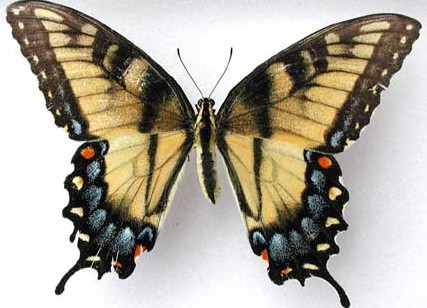
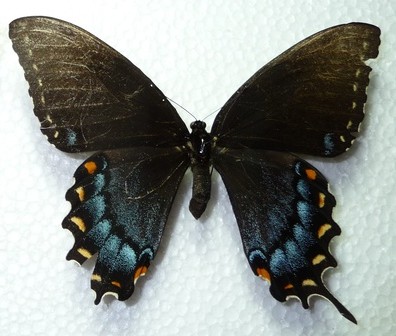
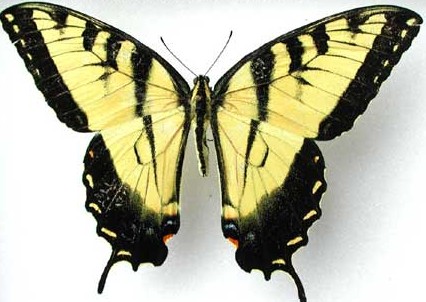
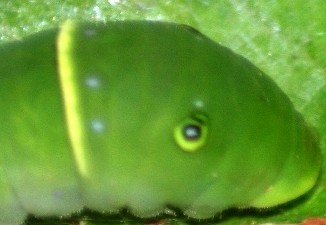 Males patrol for females and after mating females deposit large yellow-green eggs singly on the host plant leaves. The newly hatched caterpillars are brown and white and resemble bird dropping but mature to become a 2.2 inch long green caterpillar with a swollen front, and big, false, orange and black eyespots. After feeding the caterpillars pupate forming a mottled green or brown stick-like chrysalis that can overwinter in cold climates.
Males patrol for females and after mating females deposit large yellow-green eggs singly on the host plant leaves. The newly hatched caterpillars are brown and white and resemble bird dropping but mature to become a 2.2 inch long green caterpillar with a swollen front, and big, false, orange and black eyespots. After feeding the caterpillars pupate forming a mottled green or brown stick-like chrysalis that can overwinter in cold climates.
The larvae feed on a large variety of plants that are mostly trees or shrbs. Members of the Magnoliaceae and Rosacea families are especially desirable and include sweet bay magnolia (Magnolia virginaian), tulip poplar (Lirodendron tulipifera) both good trees for the garden. Lilac (Syringa vulgaris) is also popular and adds fragrant flowers to the late spring garden as well. The adults use a wide range of plans for food. They prefer red or pink flowers and favor those from the Apocynaceae (dogbane), Asteraceae (daisy), and Fabaceae (legume, or pea) families. Good garden plants that attract eastern tiger swallowtails include blackeyed susan (Rudbeckia spp), Abelia spp. and summer phlox (Phlox paniculata). For wild flower gardens, bull thistle (Cirsium vulgare) , common milkweed (Asclepias syriaca), spotted Joe Pyeweed (Eutrochium maculatum) and red clover (Trifolium pratense) are good choices. In addition, males commonly get sodium ions and amino acids from mud by puddling, that is, congregating around mud, damp gravel, or puddles , all of which could be incorporated into a garden setting.